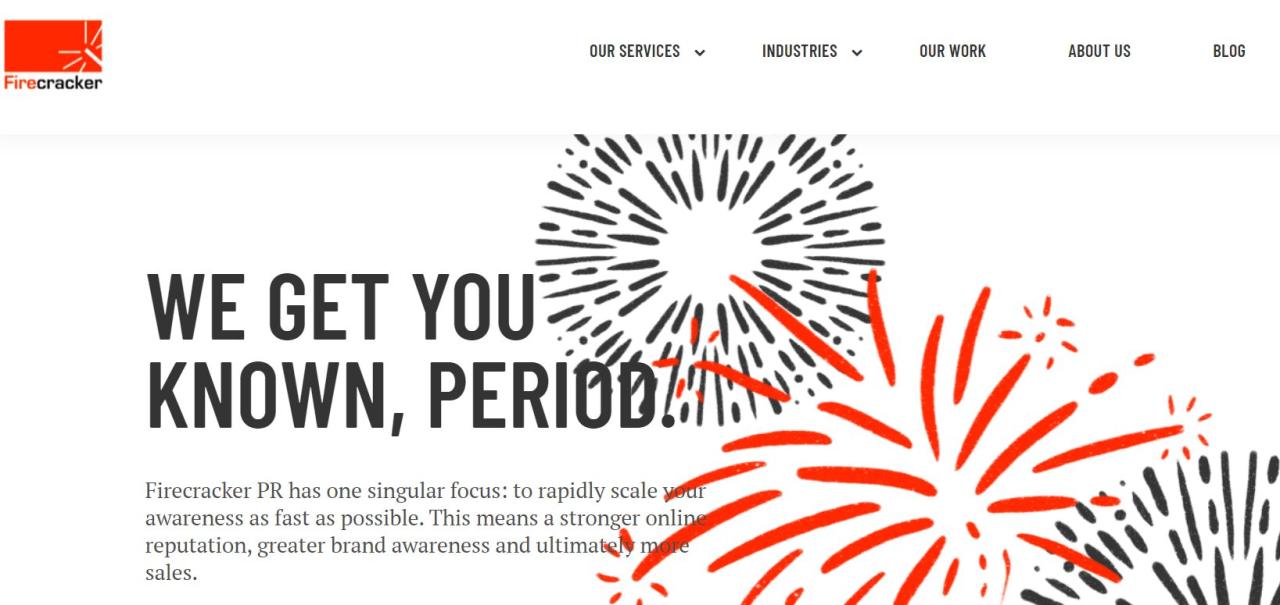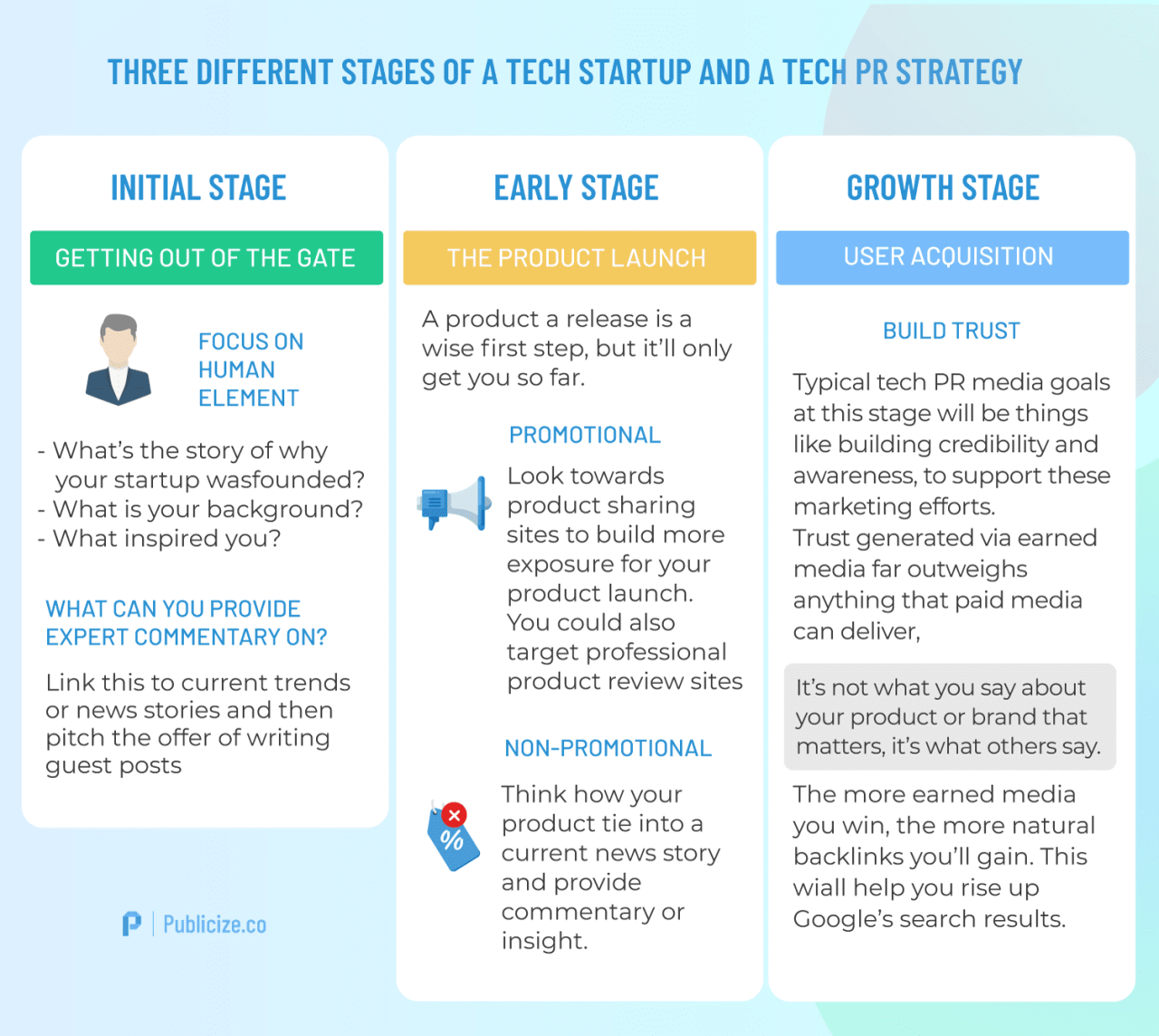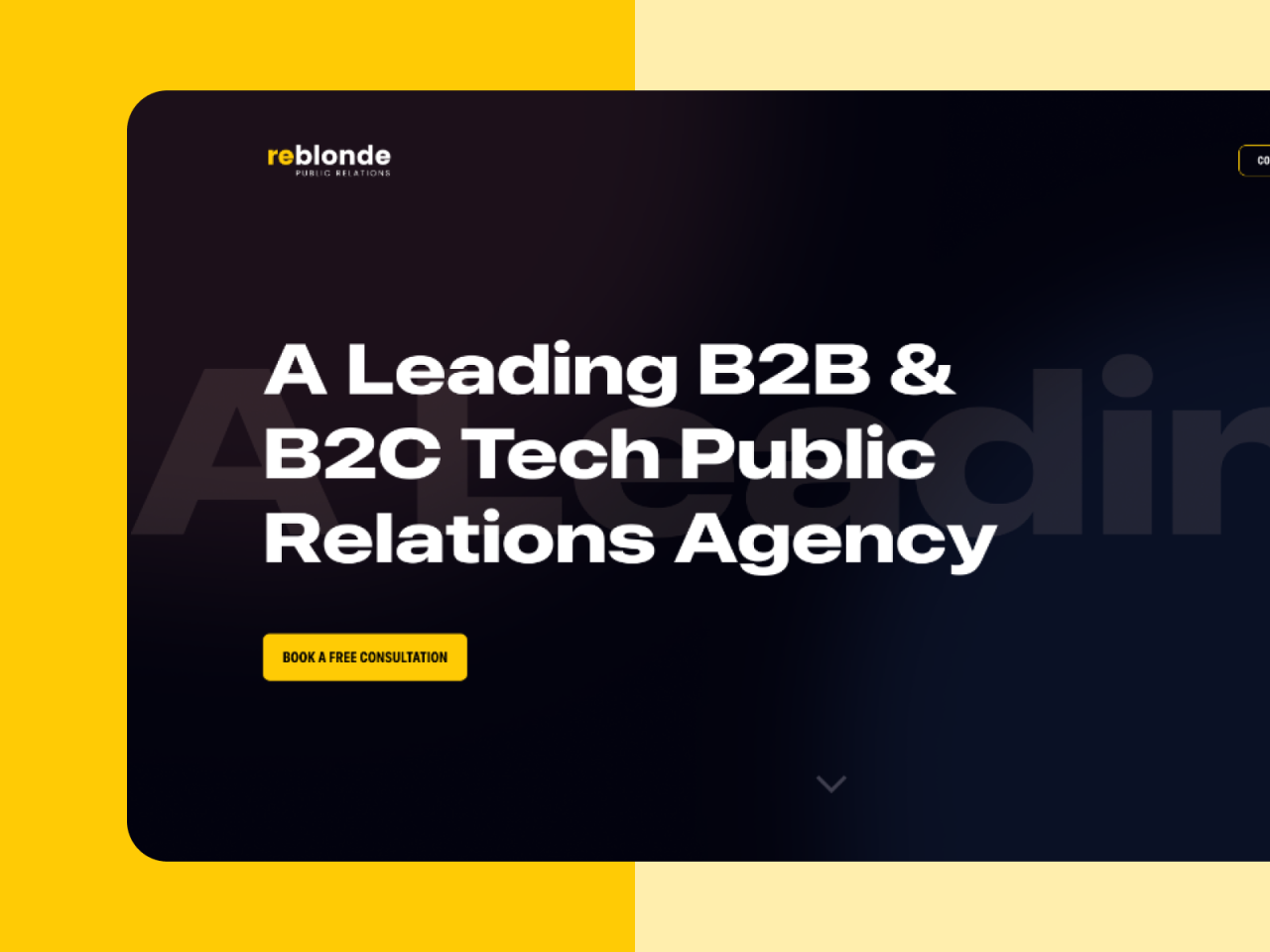PR for Technology Companies: Navigating the Digital Landscape
PR for technology companies is more than just getting your name out there; it’s about crafting a compelling narrative that resonates with both consumers and industry stakeholders. In today’s dynamic […]

PR for technology companies is more than just getting your name out there; it’s about crafting a compelling narrative that resonates with both consumers and industry stakeholders. In today’s dynamic digital landscape, traditional PR methods are evolving alongside modern strategies, creating unique challenges and opportunities for tech companies to connect with their target audiences.
This guide explores the key aspects of successful tech PR, from building a strong brand narrative and mastering media relations to leveraging social media and measuring the impact of your efforts. We’ll delve into innovative PR campaigns, analyze emerging trends, and provide practical insights to help you navigate the evolving world of technology communication.
The Evolving Landscape of Technology PR

The technology industry is constantly evolving, and so too is the way that companies in this space communicate with their audiences. With the rise of digital media, the emergence of new technologies, and the changing expectations of consumers, technology PR professionals face a unique set of challenges and opportunities.
Traditional PR vs. Digital Strategies
The traditional PR methods of press releases, media relations, and events are still relevant in the technology industry, but they are no longer enough. Today, technology companies must embrace a more holistic approach to PR that incorporates digital strategies.
- Traditional PR focuses on building relationships with journalists and securing media coverage in traditional outlets like newspapers, magazines, and television. This approach is still valuable for building credibility and reaching a wide audience, but it is becoming increasingly difficult to cut through the noise and get noticed.
- Digital Strategies are essential for reaching target audiences online. This includes using social media to engage with customers and build a community, creating content that is relevant and informative, and using search engine optimization () to ensure that a company’s website and content are easily found online.
Innovative PR Campaigns
Many technology companies have successfully used innovative PR campaigns to reach their target audiences.
- Apple’s “Think Different” Campaign (1997) is a classic example of a successful PR campaign that used a combination of traditional and digital strategies. The campaign, which featured a series of black-and-white ads featuring iconic figures like Albert Einstein and Martin Luther King Jr., helped to reposition Apple as a company that was different from its competitors and focused on innovation.
- Airbnb’s “Live There” Campaign (2015) is a more recent example of a successful PR campaign that leveraged social media and content marketing. The campaign, which featured a series of videos and articles about people’s experiences living in different parts of the world, helped to promote Airbnb’s mission of connecting people and creating a sense of community.
Building a Strong Technology Brand Narrative: Pr For Technology Companies

In the competitive landscape of technology, crafting a compelling brand narrative is crucial for standing out and establishing a strong presence. A well-defined brand story not only attracts customers but also builds trust with investors, partners, and employees.
Designing a Compelling Brand Story, Pr for technology companies
A compelling brand story is more than just a marketing slogan; it’s a narrative that resonates with the target audience on an emotional level. To design a compelling brand story, consider the following steps:
- Identify Your Core Values: What are the fundamental principles that guide your company’s actions and decisions? These values should be authentic and reflect your company’s mission and vision.
- Define Your Target Audience: Understand your ideal customer’s needs, aspirations, and pain points. Tailor your brand story to resonate with their specific interests and motivations.
- Craft a Narrative Arc: Every good story has a beginning, middle, and end. Your brand story should have a clear narrative arc that takes the audience on a journey, highlighting the challenges your company addresses, the solutions you offer, and the impact you create.
- Emphasize Human Connection: Technology can be complex, but people connect with stories. Use relatable examples and anecdotes to demonstrate the human impact of your technology.
Communicating Your Value Proposition
Once you have a compelling brand story, you need to effectively communicate your value proposition to your target audience. Here are some key strategies:
- Focus on Benefits, Not Features: Instead of listing technical specifications, highlight how your technology solves problems and improves lives. For example, instead of saying “We have a powerful AI engine,” say “Our AI helps businesses make smarter decisions and increase efficiency.”
- Use Simple Language: Avoid jargon and technical terms that may confuse your audience. Use clear and concise language that everyone can understand.
- Provide Social Proof: Showcase testimonials, case studies, and awards to demonstrate the value of your technology and build credibility.
- Emphasize Differentiation: Clearly articulate what makes your company unique and how you stand out from competitors. Highlight your competitive advantages and unique selling propositions.
Key Messages for Consistent Communication
Consistency is key in building a strong brand narrative. Develop a set of key messages that communicate your value proposition across all PR channels. These messages should be:
- Clear and Concise: Each message should be easily understood and memorable.
- Actionable: They should inspire action and encourage the audience to engage with your brand.
- Consistent: The same key messages should be communicated across all platforms, including press releases, website content, social media posts, and presentations.
Last Word

By understanding the nuances of technology PR and adapting your strategies to the ever-changing digital landscape, you can effectively communicate your company’s value proposition, build strong relationships with key media outlets, and cultivate a loyal online community. Ultimately, successful technology PR is about creating a compelling story that resonates with your target audience, driving brand awareness, and ultimately, achieving your business goals.
Public relations for technology companies often involves highlighting innovation and technical advancements. A great example of this is Precision Hose Technology Inc. , a company that specializes in high-quality hose assemblies and components. By showcasing their expertise and commitment to quality, they can effectively communicate their value proposition to potential customers and industry stakeholders.




